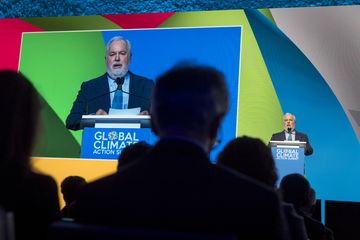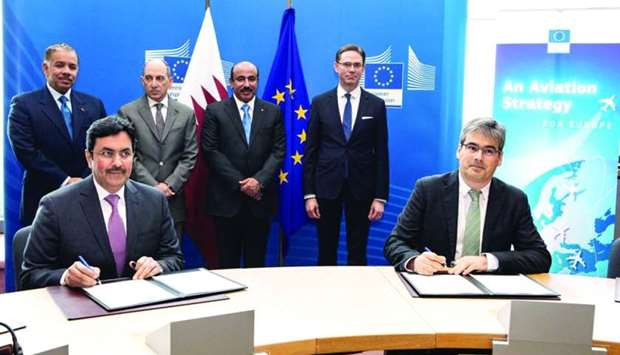Oil lobby group opposes carbon tax backed by biggest members

Proposals to tax greenhouse gas emissions have been attacked by the head of the US oil refinery trade group even though the idea has support from some of his largest member companies including BP and ExxonMobil. Chet Thompson of American Fuel & Petrochemical Manufacturers said a carbon tax would be “bad public policy” that raised prices at the pump. He called it “fanciful” to describe such a tax as revenue-neutral. A group of large companies, including several oil producers, has embraced a carbon tax as an efficient way to drive down emissions heating the planet. They were joined this year by economists, including 27 Nobel laureates and four former chairs of the Federal Reserve.
The $3.4m that AFPM spent on federal lobbying in 2018 was the second most of any oil and gas trade group, according to the Center for Responsive Politics. Its opposition points to a rocky path for carbon-tax campaigners even as the climate debate takes on more urgency in Washington. “We have not seen a carbon tax proposal yet that we think comes anywhere close to meaningfully addressing the climate issue,” Mr Thompson said. “The only thing we’ve seen so far are proposals that would raise the price of our products and make it harder for certain segments, particularly less economically viable segments of our society, to afford them.” AFPM’s stance is at odds with some of its member companies.
BP, Exxon, Royal Dutch Shell and Total or their subsidiaries are regular members of AFPM. BP has a delegate on its executive committee. They are also founding members of the Climate Leadership Council, a group established in 2017 to advocate for a carbon fee that would fund dividend payments to US households. Investors and environmental activists have chastised energy majors for membership of organisations that undermine efforts to address climate change. A veteran environmental lawyer who served in President George W Bush’s administration, Mr Thompson said his association accepted that humans had contributed to climate change. To guard against the higher seas and storms expected to worsen with global warming, he said that coastal refineries had elevated control rooms and electrical transformers, among other measures. The investments paid off when Texas refineries rebounded quickly after Hurricane Harvey in August 2017, he added. AFPM also supports a proposal to raise octane levels in petrol, a shift that Mr Thompson said could reduce carbon emissions equivalent to adding 720,000 electric vehicles to roads each year. “That doesn’t mean I’m going to accept bad public policy,” Mr Thompson said.
“Can I right now articulate a perfect public policy on this? No. I believe that mankind is going to rise to this challenge just like we’ve risen to every other challenge and there’s going to be breakthroughs that are going to help solve this problem. Do I think the breakthrough is a carbon tax? I do not.” Greg Bertelsen, senior vice-president of the Climate Leadership Council, said that a carbon fee would be the “most efficient and effective” type of climate policy. The dividend would pay the average family of four $2,000 a year, he added. “The amount of dividend they would receive would be greater than any increased cost for energy,” Mr Bertelsen said. American Petroleum Institute, the biggest oil and gas trade group in Washington, said in response to questions that it “will evaluate and respond to specific legislative proposals on carbon taxes, rather than broad policy outlines”. While the US electric power sector has cut carbon emissions in recent years, emissions from oil use were on track to reach nearly 2.4bn tonnes in 2018, the highest in a decade, according to data from the Energy Information Administration. Diesel and jet fuel have underpinned the rise, reflecting the strong US economy and more air travel.
Refinery operations alone emitted about 260m tonnes of carbon dioxide equivalent in 2018, EIA estimated. BP said: “We belong to trade associations because they represent their members on a wide range of issues. We do not expect to agree with, nor do we agree with, trade associations on all issues. BP’s position on carbon pricing has been public, clear and longstanding: we believe carbon pricing is one of the most significant steps to reduce emissions and meet global climate goals.” Shell said: “We have long recognised the importance of government-led carbon pricing systems as an essential tool for reducing emissions. We have also been very clear that the challenge of tackling climate change can only be met through unprecedented collaboration, and we are fully committed to constructive dialogue and input from investors, governments, customers and wider society.” Exxon has pledged $1m to Americans for Carbon Dividends, a lobbying affiliate of the Climate Leadership Council. It said that “membership in an association should not be construed as automatic support for all of that organisation’s policy positions”
. Mr Thompson also criticised the Green New Deal, a plan by congressional Democrats for the government to rapidly move society away from fossil fuels. “Ridding the world of our products, as suggested by the Green New Deal, is certainly not in the best interests of mankind. The world is such a far better place because of our products. There is no scenario in which I would accept the fact that the world would be better off without our stuff,” he said.









